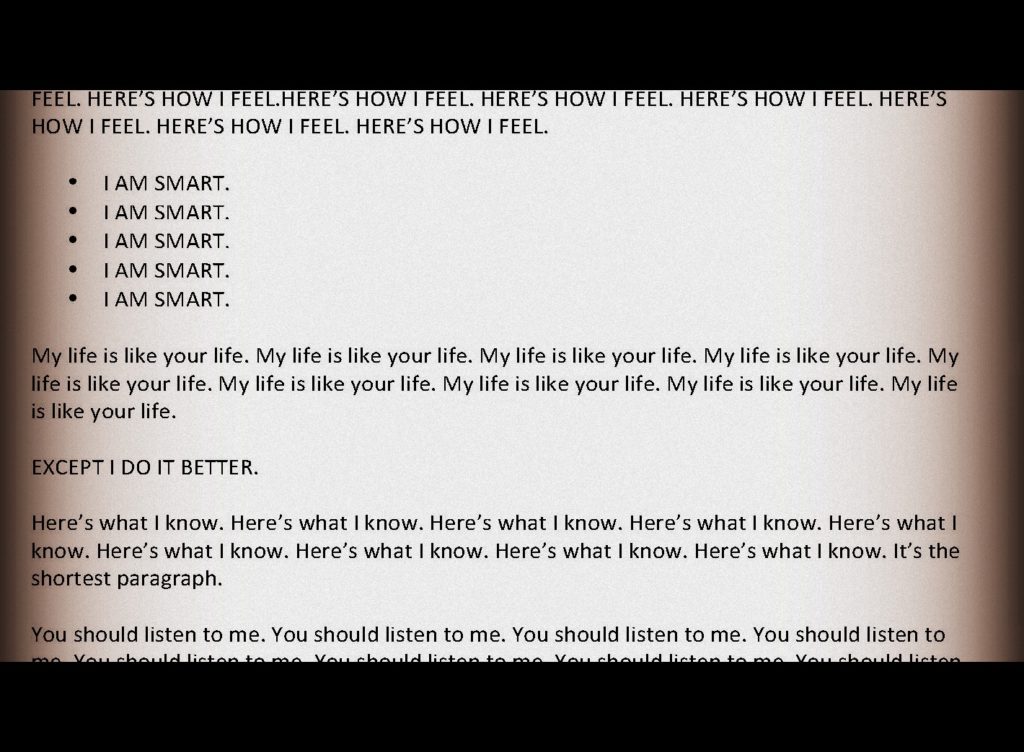
I’m in love with my career as a writer, but most of my blogging isn’t very good. It’s a narcissistic dump of feelings to clear my mind and boost my ego. I want to believe that I write great HR blog posts. But I peer back through time and see that I’m almost always writing for myself, which is the worst kind of public writing. And nearly all of my posts look something like this:
Unfortunately, HR bloggers all over the world copy my moderately successful style as a means to hack their way to success. But, my dear friends, that won’t work for you. It barely works for me, and I’m considered the master of great HR blog posts.
If you want to write a half-decent article that transforms someone’s life besides your own, you need to learn the rules and structure of a successful post.
So let’s talk about rules.
First rule: Don’t be a blogger until you read Strunk & White. Break the grammar rules once you sorta know the rules. Or break them because you’re trying really hard to learn.
Second rule: No paragraph should be more than five lines. Not five sentences. Five lines. And that’s probably two lines too many.
Third rule: Nobody wants to read about your childhood.
I’ve learned all of those rules the hard way.
Now let’s talk about the structure of a successful blog post.
The first section is the problem statement. Something’s on the reader’s mind about (HR, failure, wellness, leadership, work, money, art, animals). And, in your esteemed opinion, it’s a legitimate topic to discuss.
The second section is about validation. I can see your problem, dear reader. It’s on my mind. I’ve thought about this and/or experienced this, too.
The third section touches on why the problem statement is a universal challenge. It’s an opportunity to share a communal story that ties the reader and the author together.
The fourth section is the solution to the problem statement. As the author, I know your brain makes tens of thousands of decisions each day. You work too hard and think too much. There’s an easier way. Let’s tackle this problem together. There may or may not be bullet points.
The fifth section ties it together. The author repeats the problem statement, validates the reader’s struggle, and de-escalates the situation by restating the simple solution.
And the last stanza should be no more than a line or two with a call to action. Read my book. See me speak. Get to bed early. Take a Xanax.
So that’s the way a good blog post is written. You’ll see this formula in Forbes and Entrepreneur with sections 1-3 condensed for brevity. That’s why those articles have no soul and don’t remain with you. You finish and article and realize that there’s nothing worth imprinting on your heart.
If you want to be a phase three blogger, think bigger than click-bait and schilling for dodgy advertisers. And think beyond your childhood trauma, although good luck with that one. Cheryl Strayed advises writers to start with “why.” So here are the questions I ask myself before my daily writing exercise.
Why am I writing a blog post? Who is my audience? What do they get out of this? What’s the point? Who’s life will I change?
Once you answer those questions, the mechanics of the post — the physical and literal “how” of how you tell your story — will reveal itself to you. Then, and only then, will you write great HR blog posts.

Yikes, this is a tall standard. One that I suspect 90% of HR blog posts can’t meet. But its a goal that’s worth sharing.
I can’t meet those goals most days! But it’s important to keep your audience in mind, aim high, and write with purpose. If I do that 10% of the time, I’m successful.
I’ve been following you for almost two years, but I think I’m done. It’s disappointing that you’re doubling down on your message that everyone sucks at HR blogging. Nice try with your attempt at humility in the beginning. I believed it until you humbly referred to yourself as the “master” of HR blogging. I see you’re about as humble as Kanye West.
Now, excuse me while I follow one of those terrible bloggers who are hacking their way to success.
I’ll miss you.
I feel like I’m too busy writing history to read it.
xoxoxox
Excellent template, a lofty goal to strive and demonstrates the sterility of my own writing.
ATB